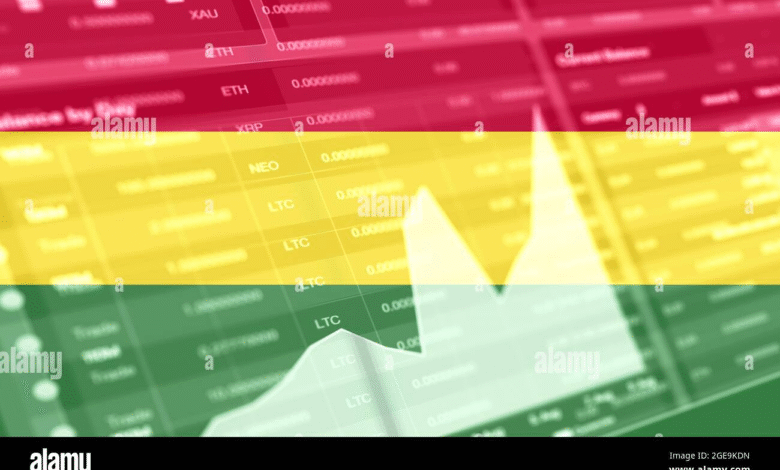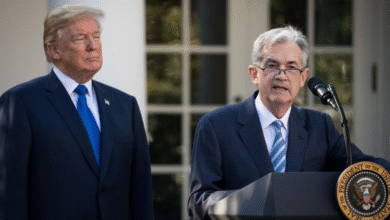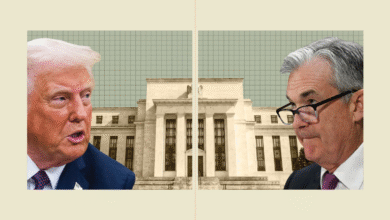Bolivia Cryptocurrency Growth Surges in 2025

Bolivia cryptocurrency growth has emerged as a significant phenomenon in the nation’s financial landscape, particularly following the Central Bank of Bolivia’s decision to embrace virtual assets. Reports indicate that the first half of 2025 witnessed a sixfold increase in the use of these digital currencies compared to the previous year, showcasing a remarkable trend in cryptocurrency adoption. As Bolivians turn to virtual assets for remittances and small transactions, the financial system is adapting rapidly; operations utilizing these assets amplified twelvefold since July 2024. This transition not only highlights the growing acceptance of cryptocurrency and stablecoin usage in Bolivia but also underscores the need to provide innovative solutions for everyday financial interactions. The Central Bank’s progressive policies have clearly paved the way for a new era of digital finance in Bolivia, demonstrating the potential of virtual assets to reshape the country’s economic future.
The ascent of digital currencies in Bolivia marks a transformative shift in how financial transactions are conducted, reflecting broader global trends in cryptocurrency adoption. As local entrepreneurs increasingly leverage virtual assets for their day-to-day operations, the role of the Central Bank of Bolivia becomes pivotal in facilitating this change. The embrace of cryptocurrency, including stablecoins, has provided an alternative for residents dealing with the scarcity of traditional currency. With projections suggesting a considerable surge in digital asset transactions by 2025, it’s evident that the country’s financial ecosystem is evolving. This dynamic transition emphasizes the potential of virtual assets as viable tools within the Bolivian economy.
The Surge of Cryptocurrency Adoption in Bolivia
The recent surge in cryptocurrency adoption in Bolivia can be attributed to several factors, including the lifting of the central bank’s ban on virtual assets. The Central Bank of Bolivia reported that the use of virtual assets skyrocketed in the first semester of 2025, showcasing an incredible sixfold increase compared to the previous year. This rapid expansion signifies a shift in the Bolivian financial landscape, as more individuals and businesses begin to recognize the potential benefits of incorporating digital currencies into their financial practices.
With transactions soaring to over 10,000 in a short span, it’s evident that Bolivians are increasingly turning to cryptocurrencies for everyday financial activities. The data not only reflects a growing acceptance of virtual assets but also underscores the changing perceptions of their utility within the financial system. The Central Bank’s initiatives to create a conducive environment for digital currencies are also key in this transformation, enhancing consumer confidence in cryptocurrency as a viable alternative.
The Role of Stablecoins in Bolivia’s Financial System
Stablecoins have emerged as a significant component of Bolivia’s cryptocurrency landscape, particularly as a dollar proxy amidst a noted scarcity of physical dollars in the economy. The Central Bank of Bolivia’s decision to permit the use of stablecoins in making transactions marks a pivotal moment for the country’s relationship with digital currencies. By replacing or supplementing traditional payment methods, stablecoins are helping local entrepreneurs navigate a fluctuating economy and secure foreign currency transactions.
Despite the benefits that stablecoins bring, there are regulatory challenges, as evidenced by the government’s recent ban on their use by state-owned entities for certain transactions. This cautious approach reflects an effort to stabilize the financial system while allowing the private sector and individual users to explore the advantages of stablecoins. The situation highlights the delicate balance that regulators must maintain to foster innovation while safeguarding the economy.
Bolivia’s Central Bank and Cryptocurrency Policies
The Central Bank of Bolivia has played a crucial role in shaping the landscape of cryptocurrency in the country. By lifting restrictions on virtual assets and introducing policies that promote their usage, the bank has catalyzed the growth of cryptocurrency adoption. This is evidenced by the increased transaction volumes, which rose dramatically, showcasing how these digital assets are becoming integral to Bolivia’s financial system.
The bank’s proactive steps aim not only to facilitate foreign currency transactions but also to ensure that small and micro-entrepreneurs have access to diverse payment options. As these policies unfold, they will likely influence future cryptocurrency regulations and shape the overall economic framework that governs digital assets in Bolivia.
The Impact of Dollar Scarcity on Cryptocurrency Growth in Bolivia
Bolivia’s current dollar scarcity has significantly fueled the growth of cryptocurrencies within the country. As the government’s supply of dollars dwindles, many citizens are turning to digital currencies as alternative payment methods, including virtual assets and stablecoins. The statement made by President Luis Arce regarding the limited availability of dollars has pushed individuals to seek more reliable alternatives, making cryptocurrencies increasingly appealing for everyday transactions.
This shift not only demonstrates a growing reliance on digital assets but also reflects broader economic conditions pushing Bolivia towards embracing innovative financial solutions. As the demand for cryptocurrencies rises, it creates opportunities for businesses and entrepreneurs to explore the benefits of operating within a more digital-centric economy.
Future Prospects for Bolivia’s Cryptocurrency Market by 2025
Looking ahead to 2025, the prospects for cryptocurrency growth in Bolivia appear promising. With increased adoption rates already observed and supportive government policies in place, it is likely that Bolivians will continue to explore various virtual assets as mainstream financial tools. The data released by the Central Bank position Bolivia as a forward-thinking nation ready to embrace the potential of cryptocurrencies, making it an attractive location for investors and tech enthusiasts alike.
Moreover, as Bolivia continues to refine its cryptocurrency regulations, we can expect the market to mature and develop new features that cater to the needs of both consumers and businesses. The increasing involvement of stablecoins in transactions will also play a pivotal role in this evolution, potentially leading to new financial services that could enhance the flexibility and efficiency of the Bolivian financial system.
Virtual Assets and Economic Opportunities in Bolivia
The rising interest in virtual assets presents various economic opportunities for individuals and businesses in Bolivia. As cryptocurrency becomes an integral part of the financial landscape, innovative financial products and services are beginning to emerge, catering specifically to the Bolivian market. Entrepreneurs are leveraging virtual currencies to expand their businesses, access international markets, and reduce reliance on traditional banking systems, which can hinder growth due to limited offerings.
Additionally, the growth of the cryptocurrency market opens new avenues for employment and business opportunities within the tech sector. As more individuals gain skills related to blockchain technology and digital asset management, the potential for fostering a robust economy driven by innovation and entrepreneurship increases, ultimately benefiting all strata of society.
Challenges Facing Cryptocurrency Adoption in Bolivia
Despite the rapid growth of cryptocurrency in Bolivia, several challenges remain that could hinder its potential. Regulatory uncertainties remain a significant barrier, as the government seeks to establish frameworks that both encourage innovation and protect the financial system. As the Central Bank navigates this complex landscape, ensuring a balanced approach between regulation and market freedom will be crucial for fostering sustainable growth in the cryptocurrency sector.
Another challenge is the education gap among the general population regarding the understanding and utilization of cryptocurrency and blockchain technology. Public awareness campaigns are necessary to inform citizens about the benefits and risks associated with digital assets. Ensuring that the populace is well-informed will facilitate more widespread adoption and enhance overall confidence in virtual assets as a reliable component of the financial system.
The Influence of International Trends on Bolivia’s Crypto Landscape
As Bolivia advances in the realm of cryptocurrency, international trends significantly influence its market dynamics. Global movements toward digital currencies, such as central bank digital currencies (CBDCs) and increases in cryptocurrency adoption seen in other nations, provide a backdrop against which Bolivia’s own developments can be measured. Observing how other countries navigate their regulatory frameworks can offer valuable insights and lessons for Bolivian policymakers as they craft their strategies.
Moreover, international investments in FinTech and blockchain technologies can impact Bolivia’s cryptocurrency ecosystem, encouraging local startups and entrepreneurs to innovate and collaborate with global partners. Such partnerships can facilitate knowledge transfer and elevate the technological capabilities of Bolivia’s financial system, paving the way for even greater adoption of virtual assets in the coming years.
Cryptocurrency and Financial Inclusion in Bolivia
Cryptocurrency has the power to enhance financial inclusion in Bolivia, particularly for those who have been traditionally underserved by the banking system. The ability to conduct transactions using virtual assets allows individuals in remote areas to access financial services that may otherwise be unavailable. By incorporating cryptocurrencies into everyday financial practices, Bolivians can benefit from the efficiency and accessibility these technologies offer.
Furthermore, cryptocurrency usage can empower entrepreneurs in Bolivia’s informal economy, allowing them to participate in the global marketplace. With the increasing acceptance of digital assets, small businesses can manage payments, receive remittances, and engage in trade more seamlessly, potentially leading to enhanced economic development and reduced poverty levels in the community.
Frequently Asked Questions
What factors are driving cryptocurrency growth in Bolivia?
The growth of cryptocurrency in Bolivia can be attributed to several factors, including the Central Bank of Bolivia’s policy changes that lifted the ban on virtual assets and the increasing demand for alternatives to traditional payment methods amid a scarcity of dollars. These changes have resulted in a significant increase in cryptocurrency adoption in 2025, with reported transaction volumes soaring by 630%.
How has the Central Bank of Bolivia influenced cryptocurrency adoption in 2025?
The Central Bank of Bolivia played a crucial role in cryptocurrency adoption in 2025 by removing restrictions on virtual assets. This policy shift allowed for the integration of cryptocurrency and stablecoin usage within the financial system, enabling the growth of transactions from 46.5 million in the first semester of 2024 to 294 million in 2025.
What is the significance of stablecoin usage in Bolivia’s financial system?
Stablecoin usage in Bolivia has gained importance as it serves as a proxy for the dollar in an economy facing a currency shortage. The broad acceptance of stablecoins allows Bolivians to conduct various transactions, including remittances and purchases, while navigating the challenges of limited dollar availability.
How can we interpret the record levels of virtual asset transactions in Bolivia?
The record levels of virtual asset transactions in Bolivia reflect a growing confidence among users in cryptocurrency adoption, driven by the Central Bank’s supportive policies. The twelvefold increase in operational transactions, reaching over 10,000, signifies a shift in the country’s financial dynamics, fostering an environment conducive to digital asset usage.
What are the implications of Bolivia’s cryptocurrency growth for small entrepreneurs?
Bolivia’s significant cryptocurrency growth presents new opportunities for micro and small entrepreneurs to engage in foreign currency transactions more easily. The Central Bank’s policies aim to provide alternatives that facilitate these transactions, ultimately benefiting local businesses by expanding their access to financial resources.
What trends are evident in Bolivia regarding virtual assets and the financial system?
Recent trends indicate a marked increase in the use of virtual assets within Bolivia’s financial system, with a reported growth of 630% in transaction volumes since mid-2024. This surge not only highlights heightened cryptocurrency adoption but also aligns with ongoing efforts by the Central Bank to adapt to the evolving economic environment.
How does the growth of virtual assets in Bolivia compare to previous years?
The growth in virtual assets in Bolivia has illustrated unprecedented expansion in 2025 compared to previous years. With transaction volumes rising over sixfold from 2024, the data indicates strengthening interest and acceptance of cryptocurrency as viable components of Bolivia’s financial ecosystem.
What challenges might Bolivia face despite its cryptocurrency growth?
Despite significant cryptocurrency growth, Bolivia may encounter challenges including regulatory hurdles, potential instability associated with digital assets, and the government’s efforts to manage stablecoin use—particularly regarding price distortions in critical markets like fuel purchasing.
| Key Metric | Value |
|---|---|
| Increase in virtual asset usage | More than 600% increase compared to 2024 |
| Volume of transactions (first semester 2025) | $294 million |
| Operations growth since July 2024 | 12 times increase, over 10,000 transactions |
| Total settled volumes since June 2024 | Nearly $430 million |
| Policy impact by Central Bank | Enabled alternatives for conducting transactions |
| Impact of dollar scarcity | Stimulated demand for virtual assets |
| Stablecoin usage | Acting as a dollar proxy in transactions |
Summary
Bolivia cryptocurrency growth has surged significantly, as evidenced by the Central Bank of Bolivia’s recent report, highlighting a more than sixfold increase in virtual asset usage in just the first half of 2025. This explosive growth demonstrates a strong shift in Bolivia’s financial landscape, with virtual currencies becoming increasingly integrated into everyday transactions amidst a backdrop of dollar scarcity. As Bolivians seek alternatives for conducting foreign currency transactions, the adoption of cryptocurrencies and stablecoins is likely to continue its upward trend.




